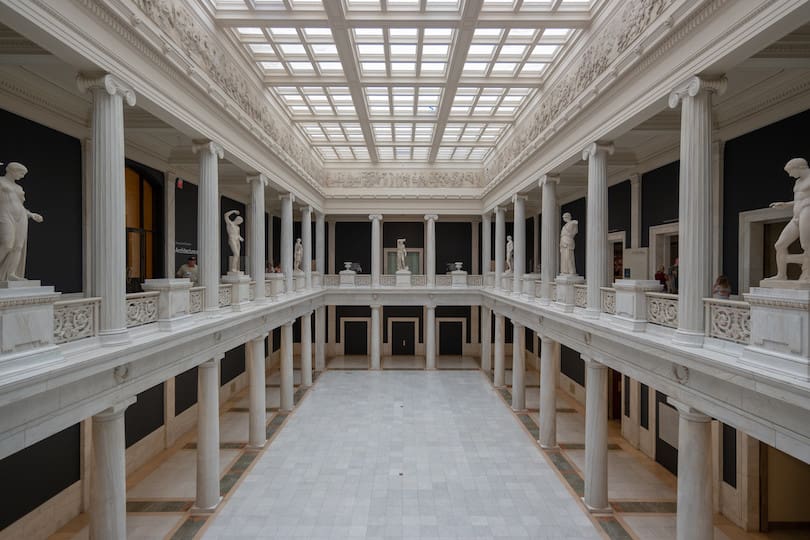Discover the top 10 largest buildings in the world, from awe-inspiring skyscrapers to magnificent structures that push the boundaries of architecture. Learn about their fascinating features, construction challenges, and the impact they have on their respective cities.
Introduction
The world’s architectural landscape is constantly evolving, and with each passing year, we witness the rise of magnificent structures that reach for the sky. In this article, we will delve into the realm of architectural wonders and explore the ten largest buildings in the world. These awe-inspiring structures stand as a testament to human ingenuity and engineering prowess, pushing the boundaries of what is possible in construction.
From bustling metropolises to remote corners of the globe, these buildings showcase the ambition of nations and the spirit of progress. We will journey through the unique features of each building, the challenges faced during their construction, and their significant impact on their respective cities. So, let’s embark on this architectural adventure and marvel at the grandeur of the 10 Largest Buildings in the World.
10 Largest Buildings in the World
In this section, we will take a closer look at each of the ten largest buildings in the world, providing an in-depth analysis of their architectural brilliance and engineering feats.
Burj Khalifa, Dubai, United Arab Emirates
The Burj Khalifa, an icon of modern Dubai, holds the title of the world’s tallest building, standing at an astonishing height of 828 meters. Its sleek design and innovative engineering make it a true marvel of the 21st century. The Burj Khalifa houses luxurious hotels, residential apartments, corporate offices, and observation decks that offer breathtaking views of the city and beyond.
Shanghai Tower, Shanghai, China
The Shanghai Tower soars 632 meters above the skyline of China’s most populous city. This striking skyscraper boasts a unique cylindrical design with a double-skin facade, ensuring energy efficiency and stability against the strong winds common in the region. Its 128 stories house offices, retail spaces, and cultural amenities, making it a vibrant vertical city within a city.
Abraj Al-Bait Clock Tower, Mecca, Saudi Arabia
Located in the holy city of Mecca, the Abraj Al-Bait Clock Tower is an impressive structure that stands at a height of 601 meters. This building serves as a focal point during the Hajj pilgrimage, accommodating thousands of visitors and worshippers in its luxury hotels and prayer halls.
Ping An Finance Center, Shenzhen, China
The Ping An Finance Center, reaching a height of 599 meters, is a symbol of Shenzhen’s rapid economic growth. Its striking futuristic design features a glass facade with stainless steel bracing, providing structural support and aesthetic appeal. The building houses offices, a conference center, and a hotel, contributing to the city’s bustling financial district.
Lotte World Tower, Seoul, South Korea
The Lotte World Tower stands tall in the heart of Seoul, soaring to a height of 555 meters. This multi-functional building is an architectural marvel, housing a mix of retail spaces, luxury hotels, offices, and an observation deck that offers panoramic views of the vibrant South Korean capital.
One World Trade Center, New York City, USA
One World Trade Center, also known as the Freedom Tower, stands as a symbol of resilience and remembrance in New York City. Rising 541 meters above the ground, this skyscraper commemorates the events of 9/11 and houses offices, a museum, and a spectacular observation deck.
Guangzhou CTF Finance Centre, Guangzhou, China
The Guangzhou CTF Finance Centre reaches a soaring height of 530 meters, dominating the skyline of Guangzhou, China. Its elegant design and sustainable features have earned it LEED Gold certification. The building houses a mix of residential, hotel, and office spaces, contributing to the city’s thriving urban landscape.
Tianjin CTF Finance Centre, Tianjin, China
Tianjin’s CTF Finance Centre, a sister tower to the Guangzhou CTF Finance Centre, stands tall at a height of 530 meters. This architectural masterpiece houses luxury hotels, serviced apartments, and office spaces, enhancing the city’s commercial and residential offerings.
China Zun, Beijing, China
The China Zun, officially known as the CITIC Tower, is a 528-meter-tall structure that dominates Beijing’s skyline. Its unique design, inspired by traditional Chinese artifacts, pays homage to the country’s rich cultural heritage. The building houses offices, a hotel, and a rooftop garden that adds a touch of greenery to the urban landscape.
Taipei 101, Taipei, Taiwan
The Taipei 101, formerly the world’s tallest building, stands at a height of 508 meters in Taiwan’s capital. This iconic skyscraper showcases a blend of modern technology and traditional elements, with its pagoda-inspired design. The building houses offices, retail spaces, and observation decks that offer stunning views of Taipei’s cityscape.
FAQs about the 10 Largest Buildings in the World
- What are the main factors that determine a building’s size and height? The size and height of a building are influenced by various factors, including engineering capabilities, construction materials, budget, and the purpose of the building. Innovative engineering techniques and advancements in construction technology have enabled the creation of taller and larger structures.
- Which country has the most buildings among the top 10 tallest in the world? As of the latest data, China boasts the most buildings among the top 10 tallest in the world. The country’s rapid urbanization and impressive architectural achievements have led to multiple skyscrapers dominating the global rankings.
- How do architects and engineers ensure the stability of such tall buildings? Architects and engineers employ advanced techniques such as wind tunnel testing, seismic analysis, and computer simulations to ensure the stability and structural integrity of tall buildings. The use of high-strength materials and innovative design elements also contributes to their stability.
- Are these tall buildings equipped to withstand natural disasters? Yes, tall buildings are designed with various safety features to withstand natural disasters, including earthquakes and strong winds. They incorporate flexible materials and damping systems to absorb and dissipate energy during seismic events.
- Do these buildings contribute to the local economy? Absolutely! These tall buildings serve as commercial hubs, providing office spaces for businesses, retail areas, and luxurious accommodations for tourists. They attract investment, tourism, and business activities, thus contributing significantly to the local economy.
- How do skyscrapers impact the environment? While skyscrapers offer space-efficient solutions in urban areas, they can also have environmental impacts. Some concerns include increased energy consumption for cooling and heating, as well as their footprint on local ecosystems. However, sustainable designs and energy-efficient technologies are being implemented to mitigate these effects.
Conclusion
The world’s 10 largest buildings are more than just towering structures; they are feats of human achievement and innovation. From the shimmering glass facades of Dubai’s Burj Khalifa to the pagoda-inspired Taipei 101, each building showcases the unique identity of its city and nation. These architectural wonders have become symbols of progress, resilience, and cultural heritage.
As we marvel at these grand structures, let us also appreciate the efforts of the architects, engineers, and construction teams who have brought these dreams to life. The 10 Largest Buildings in the World stand as a testament to the power of human imagination and the pursuit of excellence in the field of architecture.













I got good info from your blog
You completed several fine points there. I did a search on the theme and found the majority of people will consent with your blog.
We’re a group of volunteers and starting a new scheme in our community. Your site offered us with valuable info to work on. You’ve done an impressive job and our entire community will be grateful to you.